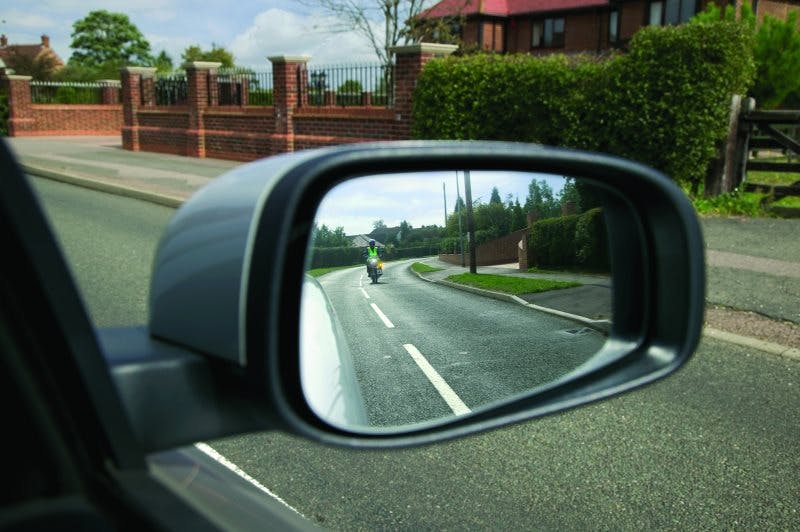
When you're behind the wheel, keen observation is a necessity. Luckily, there are some useful tools fitted in your car to help you out: your mirrors. Car mirrors broaden your view, allowing you to see what's happening behind you and enabling you to take appropriate action when necessary.
No matter how long you've been on the road, you'll know that mirror usage is an integral part of driving—and for those with more experience, this process will be near-automatic. However, it's always worth getting a reminder of the importance of car mirrors. That's why we've put together this useful guide to mirrors, when and how to use them, and their advantages and disadvantages.
Interior and exterior mirrors
Let's start with the basics. When driving, as well as paying attention to the road ahead, you'll need to check three mirrors: one interior and two exterior.
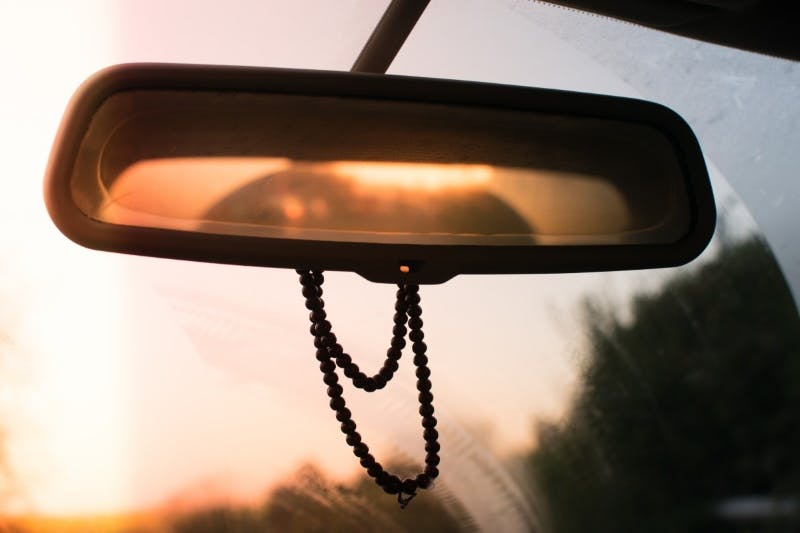
Your interior mirror is fixed onto the inside of your windscreen, and allows you to see directly behind you. Most rear view mirrors are flat, meaning that any objects they show are undistorted, and their distance and size are accurately reflected. This, in turn, allows you to more accurately judge the speed and position of other cars.
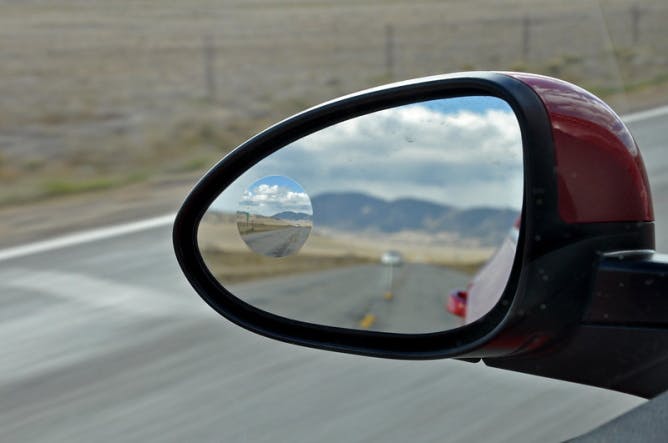
Exterior mirrors are found on either side of the car, with the mirror on the side closest to the kerb labelled the nearside mirror and the one furthest from the kerb the offside mirror. These are convex mirrors, meaning they're curved so as to give you a broader field of vision. However, the downside is that convex mirrors can make objects appear to be further away than they really are.
Both types of mirror have their own advantages—hence why, in many circumstances, it's good practice to use them in tandem. This helps to maximise both your vision and accuracy.
What does the Highway Code say about car mirrors?
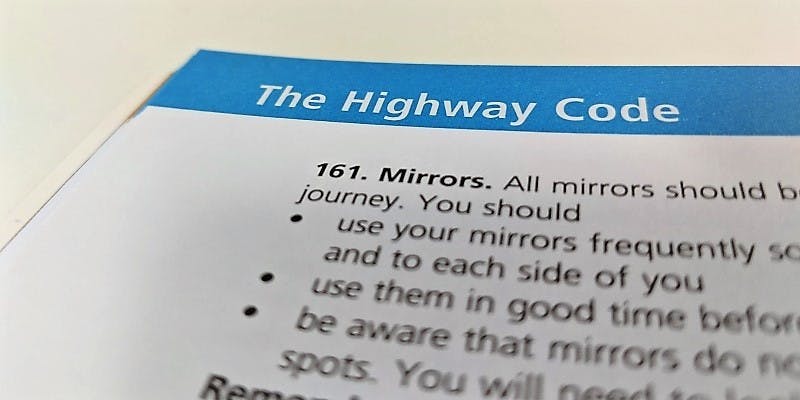
The importance of mirrors is self-evident. Without them, you wouldn't be able to tell what was going on behind you on the road without physically turning to crane your neck—something that would cause its own host of safety issues! As a result, they're mandatory equipment for any car on the road.
With all of this in mind, it won't surprise you to learn that there are dozens of references to mirrors in the Highway Code. After all, this is the go-to document for any road user in the UK—so, it's only logical that it provides drivers with advice on how and when to employ their mirrors. Here's a quick summary of some of the key advice from the Highway Code regarding mirror usage:
- Before setting off, make sure to adjust your mirrors for comfort, full control and maximum vision.
- You should use all mirrors to check the road is clear before moving off.
- Use mirrors effectively throughout your journey so that you know what is behind and to each side of you.
- Before you change direction or speed, use your mirrors in good time. This gives any drivers around you appropriate time to react, and ensures drivers trying to overtake you won't be left in a vulnerable position.
- Be aware that your mirrors won't cover all areas, and that you may need to look round to check blind spots.
As well as this general advice, there are plenty of rules and guidelines relating to specific scenarios you'll encounter on the road. (Don't worry—we'll get there shortly!) One more tip you'll find repeated plenty of times throughout the Highway Code, though, is to remember Mirror - Signal - Manoeuvre. This is something all drivers should be well aware of, but it never hurts to get a reminder!
- Before manoeuvring, use your mirrors in good time to check the position and speed of traffic behind you.
- Signal if you consider it to be necessary—and do so in good time. Always check your mirrors before signalling.
- Finally, manoeuvre if it's safe to do so.
- When will I need to use my mirrors on the road?
When will I need to use my mirrors on the road?
As the section above clarifies, mirror usage should be continuous during your drive—and you should regularly check your mirrors even when driving along a straight road. However, there are plenty of scenarios when your mirrors play an even more critical role than normal.
Manoeuvres
Mirror - Signal - Manoeuvre is part of any driver's lexicon for good reason, as failing to check your mirrors before performing a manoeuvre can have disastrous consequences. The Highway Code highlights a few occasions when mirror usage is of the utmost importance:
- When overtaking, check all mirrors, and pay particular attention to the offside mirror to make sure no one is planning to overtake you
- If you need to change lane, check all mirrors as well as your blind spot
- Check all mirrors when turning right or left
- Use mirrors at all stages when approaching and on a roundabout
Mirrors also come into play whenever you're reversing—here, you should use all your mirrors before you start, and continue to check all around while reversing.
On motorways and dual carriageways
Though motorways and dual carriageways tend to consist of long stretches of straight road, mirror usage is no less important here. Firstly, you'll need to use both your interior and exterior mirrors when joining the motorway, as well as whenever you need to change lane.
Additionally, you need to be conscious of the higher speeds present on motorways and dual carriageways, which often carry the national speed limit. This means that what's going on behind you can change in the blink of an eye—and makes regularly checking your mirrors vital.
Around other road users
It can be all too easy to forget that you're not only sharing the road with other car drivers, but with everyone from pedestrians and animals to buses and lorries. That's why there are specific rules regarding road users who require extra care, and—yep, you guessed it—your mirrors come into play here, too:
- When passing large vehicles, you'll need to keep a close eye on both your interior and exterior mirrors. Note that the driver of a large vehicle may not be able to see you in their own mirrors, so give them time and room to turn if necessary.
- Motorcyclists and cyclists require your attention on the road, too, as they may be difficult to spot and can weave in and out of traffic, especially in slower or stationary conditions. Keep checking your mirrors and blind spots carefully. You should also make sure that you keep checking your door mirror when overtaking a cyclist to ensure you don't collide with them or cut them off too closely. Be aware that, as your door mirror is convex, they'll be closer than they appear.
In inclement weather
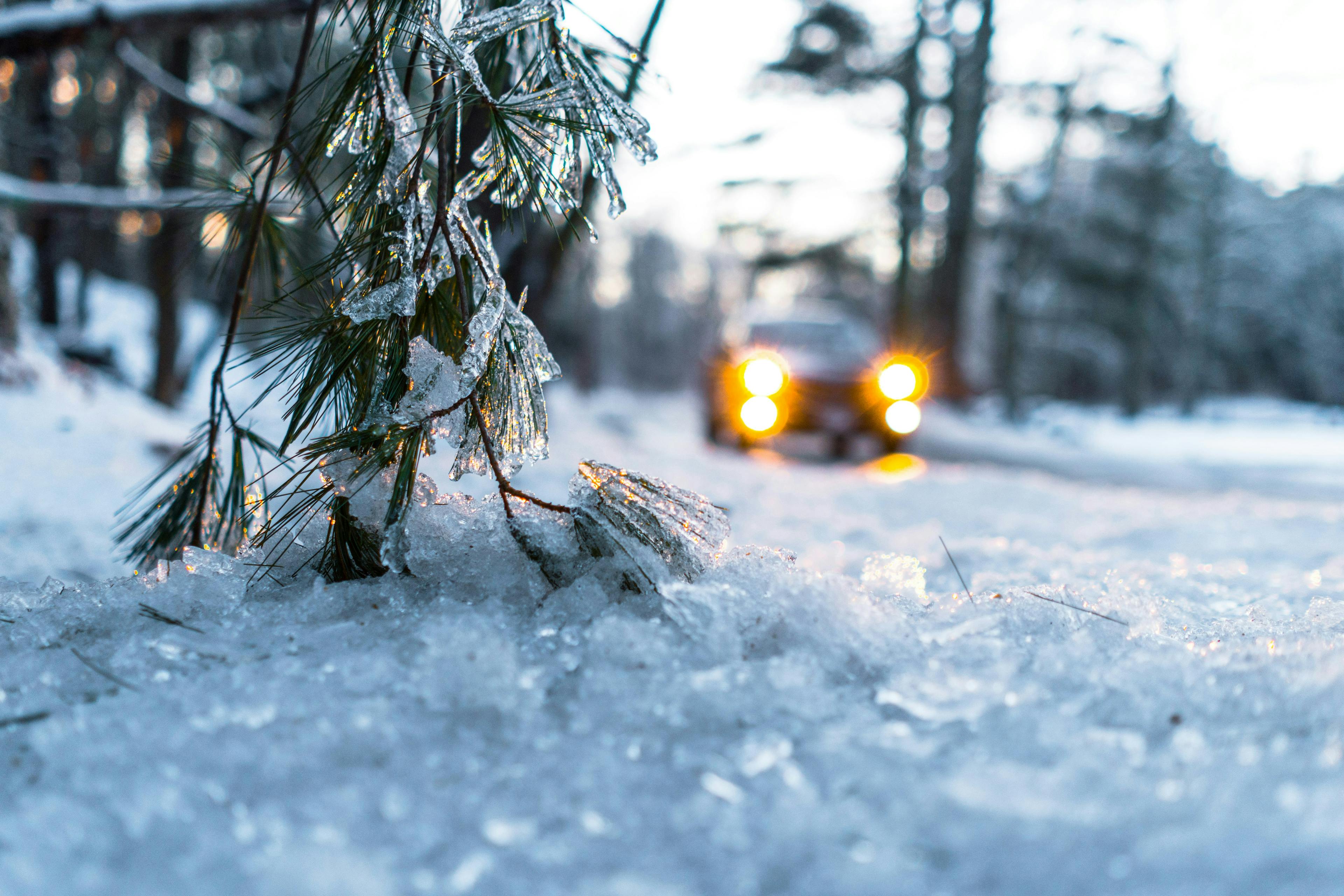
Driving in poor weather conditions means taking greater care behind the wheel, with mirror usage a key part of this. Those driving in snowy or icy weather are advised to ensure their mirrors are clear and windows demisted before setting off. Meanwhile, drivers must check their mirrors and slow down before entering fog, as well as before decelerating while driving through fog.
When exiting your vehicle
This last one doesn't strictly relate to driving—but it's still an important one to note. When you're parked on the road, and are about to exit your car, check both your mirrors and blind spot to ensure no traffic is coming towards you. As an additional safety precaution, use the Dutch Reach: use the hand furthest from the door to open it, and check as you swivel around.
Car Mirrors: Frequently asked questions
How will I need to use car mirrors on my driving test?
Your driving test is intended to reflect real-life driving—and, as such, you should be using your mirrors as often as you would when driving normally. Check your mirrors regularly without taking your eyes off the road for too long—a quick glance is usually enough. As your speed increases, you should check more frequently.
Meanwhile, every time you conduct a manoeuvre, your examiner will be checking that you use the MSM routine. Failing to do so will score you a minor fault, while persistent failure to use MSM could get you a major fault. In the event that you cause a dangerous or potentially dangerous scenario by failing to use your mirrors correctly, you'll also score a major fault.
As even one major fault means you'll fail your test, this is a mistake you don't want to make. In fact, improper use of mirrors is one of the top reasons why people fail—don't become part of the statistic!
Why do I need an extra interior mirror on my driving test?
The reason why all cars used for driving tests must have an extra mirror is to give the examiner a view of the road behind. This means they'll be able to spot any hazards—something which is necessary both to ensure that you've also noticed them, and to take action if they need to.
If taking the test in your instructor's car, it's likely they'll already have one ready to use for the test. When taking the test in your own car, you should provide your own. Your examiner may well be able to provide a spare, but it's better not to chance it—your test can't proceed if there's no extra interior mirror!
What is MSPSL?
MSPSL means Mirror - Signal - Position - Speed - Look. Essentially, this breaks down the “Manoeuvre” part of the Mirror - Signal - Manoeuvre routine into three constituent parts:
- Positioning your car correctly in the road — for example, towards the centre line if you're turning right, or maintaining your normal position if turning left
- Adjusting your speed to a level that is suitable for the manoeuvre, including changing gear if necessary
- Take a final look around to ensure it's still safe to complete the manoeuvre. This includes (yep!) using your mirrors again.
Where exactly are my blind spots—and how do I check them safely?
While you should be able to see most of what's going on around you through a combination of your windscreen and mirrors, there are certain spots that you won't be able to check without turning. These are your blind spots, and include:

- Rear quarter blind spots—areas at the sides of your vehicle towards your rear, which are neither far back enough to be covered by your mirrors nor far forward enough for you to see them by simply looking at your windscreen.
- Pillar blind spots—areas blocked by the pillars of your car.
Checking your blind spot before moving off is important, and involves checking over your shoulders to ensure there's nothing behind you that you can't see. However, it's generally unsafe to do this while you're moving. In such scenarios, a quick glance is a good option, and can help you to avoid any danger without becoming a hazard yourself.
How do I know that my mirrors are properly adjusted?
Both your interior and exterior mirrors need to be in the right position while you're driving—so, it's important to know what to look out for.
With the interior mirror, things are fairly straightforward. You need to be able to see directly through the middle of your rear window without moving. This means it will take just a glance to be able to see what's behind you. Simply adjust the mirror manually, and ensure it's clear before setting off.
The exterior mirrors are generally controlled by buttons located on your dashboard. You should be aiming to see only the tiniest sliver of your own car in each of the exterior mirrors. This position means you'll be able to see vehicles and cyclists that are close to you, while also maximising your view of the road and minimising your blind spot.
What is the anti-dazzle position?
At night, headlights behind you will be reflected in your mirror—something which can result in you being dazzled. To protect against this, most interior mirrors can be set to an anti-dazzle position. This works by shifting the position of the mirror slightly upwards and backwards, so that it is pointed towards the ceiling of your car. Don't worry—it will still reflect what's going on behind you. The difference is that it will be a much dimmer picture, meaning you'll avoid glare.
Subscribe for driving advice, offers & more
We'd love to let you know about our courses, news and offers via email. You may unsubscribe at any time.
Star Genie Limited trading as PassMeFast. Company number 10093359
Copyright © 2024 owned by Star Genie Limited
PassMeFast, Blue Tower, MediaCityUK, Salford, M50 2ST

